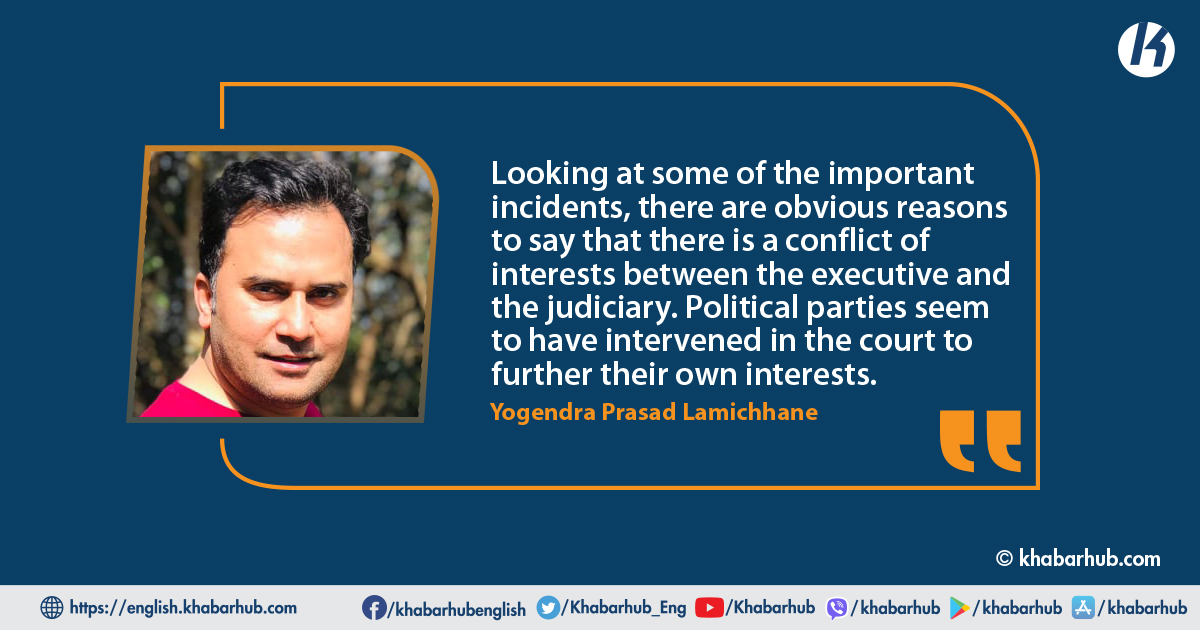Legislative, executive, and judicial powers are the three organs of government. These arms are balanced in such a way that the power balance system is enabled.
Its primary goal is to provide flawless checks and balances. As a result, separation of powers refers to the division of government responsibilities into separate organs in order to prevent one organ from performing the primary functions of another.
The legislative, executive, and judicial functions of the state are divided into three categories, each of which may be exercised only in accordance with the constitution.
Terminology
In the 18th century, French social and political philosopher Montesquieu invented the phrase “separation of powers.” Under his model, the state’s political authority is separated into legislative, executive, and judicial powers, which effectively promotes – these three powers must be separate and work independently.
The division of powers between the organs of the state was introduced by John Adams of the United States in the drafting of the US Constitution in 1785, as they could only be arbitrary by providing powers to the organs of the state.
Following then, it began to be incorporated into the constitutions of other countries throughout the world. The legislative branch is in charge of enacting state laws and managing the resources required to run the government.
The legislative organ enacts and funds public policy, and the executive organ is in charge of executing and managing it.
The judicial organ is in charge of interpreting the constitution and laws and applying their interpretations to disputes brought before it, as well as facilitating independent justice for the general public.
With the goal of keeping the court apart from other state organs, it was established in accordance with the principle of separation of powers.
The Supreme Court of Nepal was established in 1997, and its history may be seen here. Since then, the court has steadily become more free and fearful; nevertheless, because of increased political involvement, the court is now in a coma.
Constitutional arrangement in Nepal
A Constitutional Council has been established to appoint the Chief Justice of the Supreme Court, according to the 2015 Constitution.
The President appoints the Chief Justice based on the Constitutional Council’s recommendation. The Constitutional Council chooses one person from a list of Supreme Court judges who are qualified to serve as Chief Justice, and the Judicial Council makes the final decision.
The Prime Minister chairs the Council, which includes the Chief Justice, Speaker of the House of Representatives, and Chairperson of the National Assembly, as well as the Leader of the Opposition in Parliament and the Deputy Speaker of the House of Representatives.
Looking at the structure of the Constitutional Council, the political influence is seen in the appointment of the Chief Justice.
According to the provisions of the Constitutional Council, only the most qualified of the qualified judges should become the Chief Justice, but its misuse is feared by the political leadership.
Series of ‘politically influenced’ incidents in Nepali Judiciary
Nepal’s executive and judiciary is having ‘friction’ relations with each other for a long time because of vested interests.
Some of the key examples of these incidents include; In March 2013, the court has been dragged into controversy because of Khil Raj Regmi appointment’s as Chairman of the Council of Ministers as well as holding the Chief Justice position even after being appointed as a Chairman of Council of Ministers.
All political parties have been given the responsibility of solving the then political deadlock and holding elections. Giving responsibility to the chief justice to solve the political crisis has been seen as ‘political intervention’ in Nepal’s judiciary.
Sushila Karki became the Chief Justice dated 11th July 2016 to 9th June 2017. During her tenure, she has to face impeachment charges( however it was withdrawn). The reasons given by some of the political leaders were Karki’s no cooperation with the government.
Cholendra Samser Jabara, who became the Chief Justice on January 2, 2019; is currently facing impeachment in the parliament.
Jabara had reinstated the dissolved parliament for two times, which had been dissolved twice by the Oli government, and gave an interim order to make the Nepali Congress leader Sher Bahadur Deuba the new Prime Minister by replacing KP Oli. He was also criticized for seeking his share in the Deuba government.
Conclusion
Looking at some of the important incidents above, there is a conflict of interests between the executive and the judiciary.
Political parties seem to have intervened in the court to further their own interest. Basically, the appointment of a judge is in accordance with one’s own interests and the decision is made in one’s favor. Yesterday- today, even those who are loyal to the political party are found to be made judges.
Judicial Council has been set up for the appointment of judges. Judges are appointed by the President on the recommendation of the Judicial Council chaired by the Chief Justice.
On the recommendation of the Supreme Court Senior Judge, Minister of Law, Council of Ministers, One expert Lawyers appointed by the President, and representatives of the Nepal Bar Association appointed by the President, There is a provision to have five members.
The three members of the Judicial Council (two appointed by the Law Minister and the President) haven’t seems separated from the political faith.
The other two members (the Chief Justice and the Senior Judge) also find it difficult to avoid political influence This is because of the tendency of the Chief Justices to use the Supreme Court to gain political advantage.
Instead of the right and deserving people, the practice of appointing judges by the political parties and leaders has interfered. According to the constitution, a mandatory parliamentary hearing has been provisioned before the appointment of the Chief Justice and judges.
Even in this process, the members of the Parliamentary Hearing Special Committee, fearing being influenced by politics, have raised more general questions than serious allegations against them.
Taking advantage of some of the weaknesses of the above constitutional provisions, the political parties and leaders seem to have manipulated with vested interests in the appointment of the Chief Justice and Judges.
In this process, the Chief Justice and the judges has be used to take some advantage of the closeness of politics.
Such attitude of political parties should be eliminated as soon as possible to make the three arms of the government full functioning as well as for democratic strengthening.









Comment